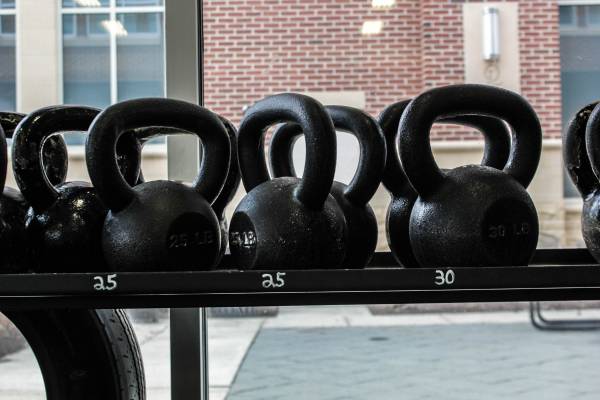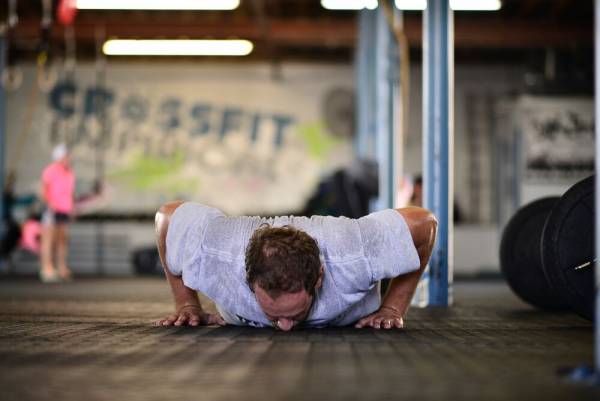When I was younger, I thought passing forty was going to be awful. Not because I’m scared of getting older, but because I was worried about a decline in my physical abilities. As someone who has always prided himself on his fitness and health, I could see that beyond forty things didn’t look so rosy.
Age and Performance
A 2008 study by Wright and Perricelli found that performance drops roughly 3.4% per year after age 35, and then has a massive drop off at age 75. With drops in testosterone and growth hormone, in addition to lifestyle changes that impact the way insulin is handled by the body, it is not unusual to see once-slim athletic people gain weight and slow down.
It is important to stay active to stave off the effects of age-related physical decline.
Some of these changes have to do with lifestyle and work. While you can’t change the aging process, there are often other factors at play beyond the obvious hormonal and physical changes. Hopefully, as you grow older you will also earn more money. This becomes a double-edged sword. While it allows you more freedom to buy better quality food, it also often leads to eating out more or going away on holidays more. Neither of those is going to help you with long-term athletic goals.
The Problem With Vacations
While a week off on holiday might be good for you, if you take two weeks off you’ll need a month to get back to where you were prior to leaving. And this gets at the big problem for many mature trainees trying to hold on to their fitness – they simply have too much time off. Between work, illness, kids being sick and having to look after them, and holidays, it’s possible that all a person really ever does is spin his or her wheels in a constant state of trying to catch up.
“If you’re one of those people who are pushed for time, travel often, or are just looking to maximize your minimal training time, then here’s a solution.”
The problem for many isn’t lack of dedication. It’s the lack of portability of their training plan so they can continue to train even while unable to make it to the gym. While many companies have done a great job of making equipment for use at home, having a fully equipped garage complete with lifting platform, pull up rig, and an assortment of resistance training tools is impossible for most people. (I personally much prefer keeping my car in my garage.)
But kettlebells don’t take up much space. A fully stocked kettlebell home-gym may take up as little as a single square meter of space. When I first started using kettlebells, I had a few bells and a single pull up bar in my garage (with room left over to park my car). And when I first started training people solely with kettlebells and outside a normal gym environment, I used the exact same set up, but added a few bells to allow me to train more people.

Kettlebells are easy to pack and can be find in hotel gyms worldwide.
Another benefit to an all-kettlebell workout is that kettlebells have become so widespread you can find them in just about any gym, including many hotels. If you’re one of those people who are pushed for time, travel often, or are just looking to maximize your minimal training time, then here’s a solution. All you need are the appropriate kettlebells and a pair of running shoes.
The 3-Day Vacation Workout Plan for 40+ Athletes
Day 1
- Double kettlebell clean and press
- Pull ups
Perform a set of clean and presses. Rest appropriately and then perform as many pull ups as you can. Rest again before returning to clean and presses. Set a timer for 20 minutes and perform as many reps of each as you can within the time allotted. Every workout try to increase the reps – even if just by a single rep of each exercise.
Run:
- 10-minute easy warm up
- 3-4 x 500m hard/500m easy
- 10 minute easy cool down
Day 2
- Double kettlebell front squat
- Kettlebell snatch
Follow the same format as for day one. Perform some squats, rest as needed, then perform some snatches. Use the same 20-minute escalating density training (EDT) format.
Run: 40 minutes, all easy
Day 3
- Stretch or easy yoga session for 30 minutes
- Walk 30 minutes easy
Staying Active Can Be Simple
It’s that simple. By keeping all the bells and whistles out of your training plan you can find time to train anywhere. All three of these sessions can be done in just over an hour. You’ll need a few minutes to warm up before you start and should always take time to stretch and cool down afterward to prevent the extra stiffness that seems to come with age. Simply perform the program in a repeating fashion until you need to swap exercises around, which will be around the time you’ve done each workout six times.

Staying consistent with your fitness is the key to maintaining a strong, active body.
If you follow this program for six weeks or so and are then looking to change things up follow these simple rules:
- The pairs of exercises should be different. For instance, don’t pick presses and push presses as an exercise pair. Make them opposing actions, such as presses and pull ups or make them something like swings (or snatches) and squats.
- When selecting weights, pick a weight you can handle for 6-8 reps in a single set. If you go too heavy, you’ll need to rest too long after each set, which will greatly diminish the amount of work you can get done. EDT works well with moderate weights and gives a bit of a cardio hit, too, as you try to keep moving to maximize how many reps you do in a single session.
- If the gym doesn’t have a great selection of bells, you can always do everything single bell. Goblet squats and two-hand swings make a great pair for all around lower-body training and will definitely give you that cardio hit.
- Don’t do a hard interval run on the day you do the lower body strength work. Just trust me on this. Your legs will feel heavy and you won’t be able to hold a fast pace for the work intervals. Use the lower-body day to work on your aerobic system and enjoy being able to cruise instead of push hard.
- Don’t try to make the sessions enormous. The entire point of this is that you will be able to train often enough to negate the negative effects of travel or missing training. Allow the volume of work brought on through consistency to do the work for you.
Check out these related articles:
- Fitness Lessons for the 40+ Athlete
- The 4-Day 40+ Fitness Plan
- The Training Solution for the 40+ Athlete
- What’s New On Pulse Beat Fit Today
References:
1. Wright, V. J., and B. C. Perricelli. “Age-Related Rates of Decline in Performance Among Elite Senior Athletes.” The American Journal of Sports Medicine, 2007, 443-50.
Photos 1 and 3 courtesy of CrossFit Empirical.
Photo 2 courtesy of Pulse Beat Fit.






